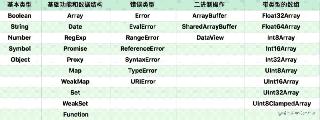Django多數(shù)據(jù)庫(kù)聯(lián)用實(shí)現(xiàn)方法解析
本文講述在一個(gè) django project 中使用多個(gè)數(shù)據(jù)庫(kù)的方法, 多個(gè)數(shù)據(jù)庫(kù)的聯(lián)用 以及多數(shù)據(jù)庫(kù)時(shí)數(shù)據(jù)導(dǎo)入導(dǎo)出的方法。
直接給出一種簡(jiǎn)單的方法吧,想了解更多的到官方教程,點(diǎn)擊此處
代碼
1. 每個(gè)app都可以單獨(dú)設(shè)置一個(gè)數(shù)據(jù)庫(kù)
settings.py中有數(shù)據(jù)庫(kù)的相關(guān)設(shè)置,有一個(gè)默認(rèn)的數(shù)據(jù)庫(kù) default,我們可以再加一些其它的,比如:
# Database# https://docs.djangoproject.com/en/1.8/ref/settings/#databasesDATABASES = { ’default’: { ’ENGINE’: ’django.db.backends.sqlite3’, ’NAME’: os.path.join(BASE_DIR, ’db.sqlite3’), }, ’db1’: { ’ENGINE’: ’django.db.backends.mysql’, ’NAME’: ’dbname1’, ’USER’: ’your_db_user_name’, ’PASSWORD’: ’yourpassword’, 'HOST': 'localhost', }, ’db2’: { ’ENGINE’: ’django.db.backends.mysql’, ’NAME’: ’dbname2’, ’USER’: ’your_db_user_name’, ’PASSWORD’: ’yourpassword’, 'HOST': 'localhost', },} # use multi-database in django# add by WeizhongTuDATABASE_ROUTERS = [’project_name.database_router.DatabaseAppsRouter’]DATABASE_APPS_MAPPING = { # example: #’app_name’:’database_name’, ’app1’: ’db1’, ’app2’: ’db2’,}
在project_name文件夾中存放 database_router.py 文件,內(nèi)容如下:
# -*- coding: utf-8 -*-from django.conf import settings DATABASE_MAPPING = settings.DATABASE_APPS_MAPPING class DatabaseAppsRouter(object): ''' A router to control all database operations on models for different databases. In case an app is not set in settings.DATABASE_APPS_MAPPING, the router will fallback to the `default` database. Settings example: DATABASE_APPS_MAPPING = {’app1’: ’db1’, ’app2’: ’db2’} ''' def db_for_read(self, model, **hints): ''''Point all read operations to the specific database.''' if model._meta.app_label in DATABASE_MAPPING: return DATABASE_MAPPING[model._meta.app_label] return None def db_for_write(self, model, **hints): '''Point all write operations to the specific database.''' if model._meta.app_label in DATABASE_MAPPING: return DATABASE_MAPPING[model._meta.app_label] return None def allow_relation(self, obj1, obj2, **hints): '''Allow any relation between apps that use the same database.''' db_obj1 = DATABASE_MAPPING.get(obj1._meta.app_label) db_obj2 = DATABASE_MAPPING.get(obj2._meta.app_label) if db_obj1 and db_obj2: if db_obj1 == db_obj2:return True else:return False return None # for Django 1.4 - Django 1.6 def allow_syncdb(self, db, model): '''Make sure that apps only appear in the related database.''' if db in DATABASE_MAPPING.values(): return DATABASE_MAPPING.get(model._meta.app_label) == db elif model._meta.app_label in DATABASE_MAPPING: return False return None # Django 1.7 - Django 1.11 def allow_migrate(self, db, app_label, model_name=None, **hints): print db, app_label, model_name, hints if db in DATABASE_MAPPING.values(): return DATABASE_MAPPING.get(app_label) == db elif app_label in DATABASE_MAPPING: return False return None
這樣就實(shí)現(xiàn)了指定的 app 使用指定的數(shù)據(jù)庫(kù)了,當(dāng)然你也可以多個(gè)sqlite3一起使用,相當(dāng)于可以給每個(gè)app都可以單獨(dú)設(shè)置一個(gè)數(shù)據(jù)庫(kù)!如果不設(shè)置或者沒有設(shè)置的app就會(huì)自動(dòng)使用默認(rèn)的數(shù)據(jù)庫(kù)。
2.使用指定的數(shù)據(jù)庫(kù)來執(zhí)行操作
在查詢的語句后面用 using(dbname) 來指定要操作的數(shù)據(jù)庫(kù)即可
# 查詢YourModel.objects.using(’db1’).all() 或者 YourModel.objects.using(’db2’).all()# 保存 或 刪除user_obj.save(using=’new_users’)user_obj.delete(using=’legacy_users’)
3.多個(gè)數(shù)據(jù)庫(kù)聯(lián)用時(shí)數(shù)據(jù)導(dǎo)入導(dǎo)出
使用的時(shí)候和一個(gè)數(shù)據(jù)庫(kù)的區(qū)別是:
如果不是defalut(默認(rèn)數(shù)據(jù)庫(kù))要在命令后邊加 --database=數(shù)據(jù)庫(kù)對(duì)應(yīng)的settings.py中的名稱 如: --database=db1 或 --database=db2
數(shù)據(jù)庫(kù)同步(創(chuàng)建表)
# Django 1.6及以下版本python manage.py syncdb #同步默認(rèn)的數(shù)據(jù)庫(kù),和原來的沒有區(qū)別# 同步數(shù)據(jù)庫(kù) db1 (注意:不是數(shù)據(jù)庫(kù)名是db1,是settings.py中的那個(gè)db1,不過你可以使這兩個(gè)名稱相同,容易使用)python manage.py syncdb --database=db1# Django 1.7 及以上版本python manage.py migrate --database=db1
數(shù)據(jù)導(dǎo)出
python manage.py dumpdata app1 --database=db1 > app1_fixture.jsonpython manage.py dumpdata app2 --database=db2 > app2_fixture.jsonpython manage.py dumpdata auth > auth_fixture.json
數(shù)據(jù)庫(kù)導(dǎo)入
python manage.py loaddata app1_fixture.json --database=db1python manage.py loaddata app2_fixture.json --database=db2
以上就是本文的全部?jī)?nèi)容,希望對(duì)大家的學(xué)習(xí)有所幫助,也希望大家多多支持好吧啦網(wǎng)。
相關(guān)文章:
1. JAMon(Java Application Monitor)備忘記2. js的一些潛在規(guī)則使用分析3. 如何用 Python 制作一個(gè)迷宮游戲4. 讓chatgpt將html中的圖片轉(zhuǎn)為base64方法示例5. IntelliJ IDEA設(shè)置默認(rèn)瀏覽器的方法6. Python PyQt5中彈出子窗口解決子窗口一閃而過的問題7. NetCore 配置Swagger的詳細(xì)代碼8. Python基于pyjnius庫(kù)實(shí)現(xiàn)訪問java類9. php設(shè)計(jì)模式之備忘模式分析【星際爭(zhēng)霸游戲案例】10. python怎樣讀取txt文件的數(shù)據(jù)內(nèi)容

 網(wǎng)公網(wǎng)安備
網(wǎng)公網(wǎng)安備